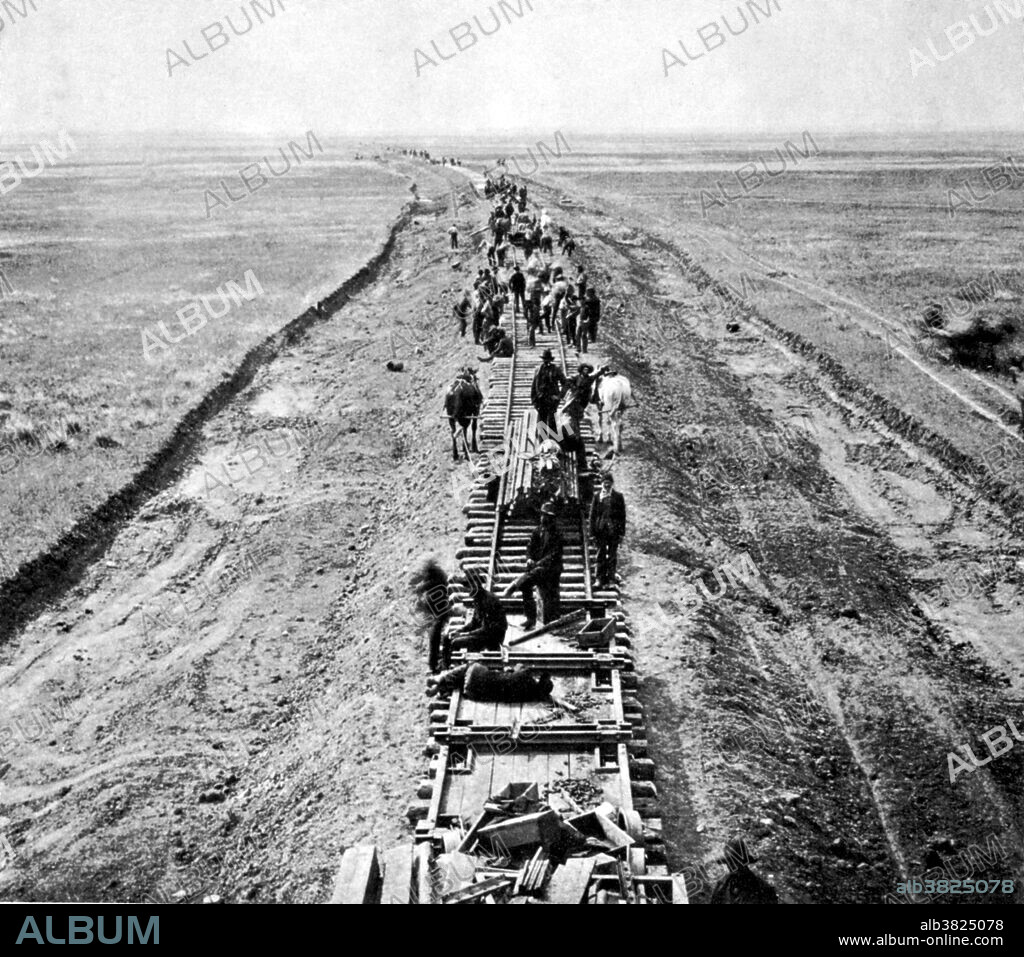alb3825078
Construction of Northern Pacific Railroad, 1880s

|
Añadir a otro lightbox |
|
Añadir a otro lightbox |



¿Ya tienes cuenta? Iniciar sesión
¿No tienes cuenta? Regístrate
Compra esta imagen

Título:
Construction of Northern Pacific Railroad, 1880s
Descripción:
Traducción automática: Northern Pacific Railroad colocó acero en Montana en 1882-3. El Ferrocarril del Pacífico Norte era un ferrocarril transcontinental que operaba a través del nivel norte del oeste de los Estados Unidos desde Minnesota hasta la costa del Pacífico. Fue aprobado por el Congreso en 1864 y se le otorgaron casi 40 millones de acres de concesiones de tierras, que utilizó para recaudar dinero en Europa para la construcción. La construcción comenzó en 1870 y la línea principal se abrió desde los Grandes Lagos hasta el Pacífico cuando el ex presidente Ulysses S. Grant condujo el último "pico dorado" en el oeste de Montana el 8 de septiembre de 1883. El ferrocarril tenía aproximadamente 6800 millas de Seguimiento y servicio a un área grande, incluido un seguimiento extenso en los estados de Idaho, Minnesota, Montana, Dakota del Norte, Oregón, Washington y Wisconsin. Las principales actividades eran el envío de trigo y otros productos agrícolas, ganado, madera y minerales; traer bienes de consumo, transportar pasajeros; y venta de terrenos. Tenía una historia financiera tumultuosa y en 1970 se fusionó con otras líneas para formar Burlington Northern Railroad.
Northern Pacific Railroad laying steel in Montana in 1882-3. The Northern Pacific Railway was a transcontinental railroad that operated across the northern tier of the western United States from Minnesota to the Pacific Coast. It was approved by Congress in 1864 and given nearly 40 million acres of land grants, which it used to raise money in Europe for construction. Construction began in 1870 and the main line opened all the way from the Great Lakes to the Pacific when former president Ulysses S. Grant drove in the final "golden spike" in western Montana on September 8, 1883. The railroad had about 6800 miles of track and served a large area, including extensive trackage in the states of Idaho, Minnesota, Montana, North Dakota, Oregon, Washington and Wisconsin. The main activities were shipping wheat and other farm products, cattle, timber and minerals; bringing in consumer goods, transporting passengers; and selling land. It had a tumultuous financial history, and in 1970 it merged with other lines to form the Burlington Northern Railroad.
Crédito:
Album / NYPL/Science Source
Autorizaciones:
Modelo: No - Propiedad: No
¿Preguntas relacionadas con los derechos?
¿Preguntas relacionadas con los derechos?
Tamaño imagen:
3900 x 3444 px | 38.4 MB
Tamaño impresión:
33.0 x 29.2 cm | 13.0 x 11.5 in (300 dpi)
Palabras clave:
1882 • 1883 • ACONTECIMIENTO • AMERICA • AMERICANO • BLANCO Y NEGRO • CIENCIA • DÉCADA DE 1880 • DISEÑO • ESTADOS UNIDOS DE AMERICA • ESTADOS UNIDOS • FAMOSO • FERROCARRIL • FOTO • FOTOGRAFIA • HISTORIA • HISTORICO • HOMBRES • IMPORTANTE • INGENIERIA CIVIL • INGENIERIA MECANICA • INGENIERÍA • LEJANO OESTE • OESTE SALVAJE • PISTA • SIGLO XIX • TECNOLOGÍA • TECNOLÓGICA • TRABAJADORES • TRANSPORTE • TRIPULACION
 Pinterest
Pinterest Twitter
Twitter Facebook
Facebook Copiar enlace
Copiar enlace Email
Email
